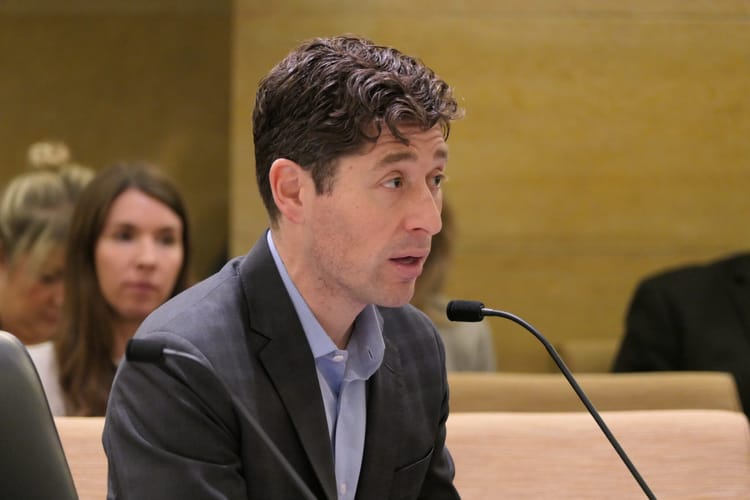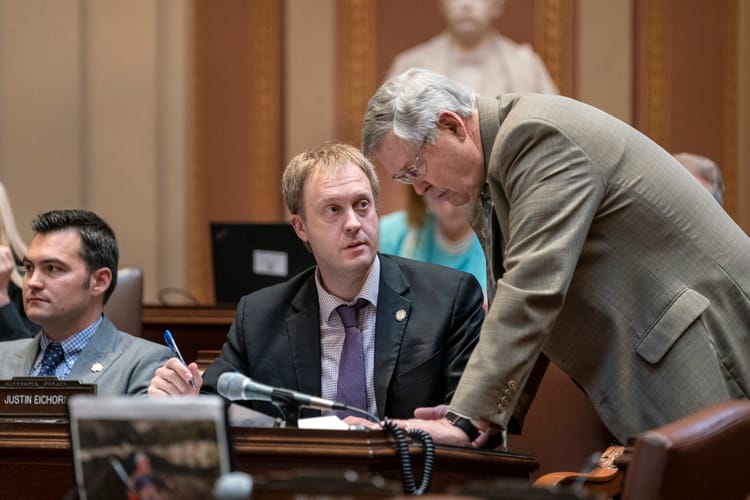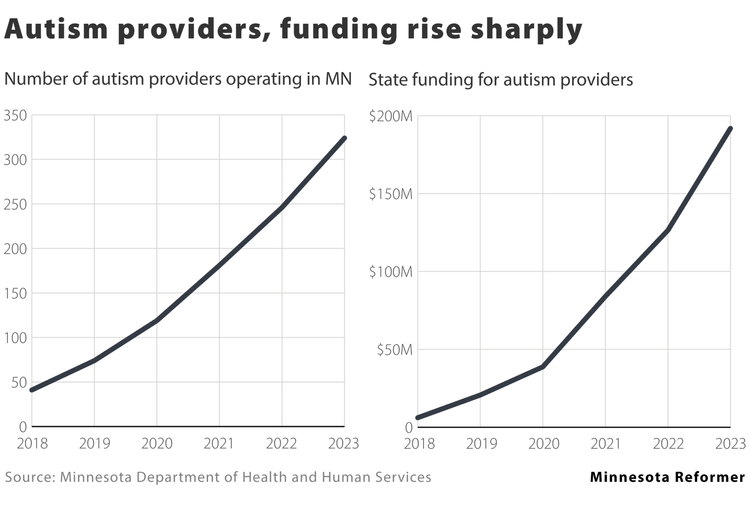For climate and clean water, state agencies need Walz to lead

By Jean Wagenius, Minnesota Reformer
To their credit, Gov. Tim Walz and Lt. Gov. Peggy Flanagan set a goal of reducing greenhouse gas emissions from Minnesota 50% by 2030. The Legislature included the same goal in the final environment/energy bill which is now law. It’s the goal science tells us we must meet globally to avoid the worst impacts of climate change.
To meet the 2030 goal, agriculture needs to substantially reduce its use of nitrogen fertilizer that is creating greenhouse gas emissions. Reducing nitrogen is also needed to stop pollution of groundwater, which is making it unsafe for drinking and making surface water unsafe for aquatic life. It can be done. Minnesota agriculture can sustainably produce food for Minnesotans and the world.
Nitrous oxide emissions from nitrogen applied to crops
The Minnesota Pollution Control Agency tracks greenhouse gas emissions from seven economic sectors. In its latest report of Minnesota emissions, MPCA said that the transportation sector was the biggest emitter at about 25% of the state’s total emissions, and the combined agriculture/forestry sector was second. But the effect of this combination is misleading. The agriculture sector is a net emitter of greenhouse gas emissions. Forests sequester carbon. If MPCA considered agriculture and forests as separate economic sectors, then agriculture would be Minnesota’s largest emitter of greenhouse gasses.
MPCA also tracks greenhouse gas emissions from specific activities in each sector and reports each kind of emission. In total, nitrous oxide is the biggest source, accounting for 49% of agriculture’s greenhouse gas emissions. Carbon dioxide is 27%, methane is 24%. Most of agriculture’s nitrous oxide emissions are from row crop agriculture, some is from animal agriculture.
In 2021 Minnesota farmers planted about 8.5 million acres of corn, covering more than 15% of the state’s total surface area. Of that vast acreage, 31% were devoted to corn for ethanol.
Growing corn is heavily dependent on nitrogen fertilizer. More nitrogen is applied than needed for growing corn. When nitrogen fertilizer is applied, nitrous oxide is produced from the nitrogen in soils, crop residues and runoff. MPCA reports that “Nitrous oxide emissions from crop agriculture increased by approximately 9% from 2005 to 2020.”
Bear in mind: The emissions reported by MPCA don’t even include emissions in other states where the nitrogen fertilizer is produced from fossil fuels.
Nitrogen in our waters from agriculture
When it comes to reducing climate pollution from agriculture, Europe has been successful. In the past 20 years European efforts focused on water pollution also reduced nitrous oxide emissions and increased agricultural productivity.
While Europe has been successful in reducing nitrous oxide from agriculture, Minnesota has failed. In 2014, Minnesota created a nutrient reduction plan for surface waters relying on unenforceable goals, voluntary actions, best management practices and cash payments. But nitrogen pollution didn’t decrease — it increased. Regulation has helped other industries limit pollution; it’s time now to limit nitrogen pollution with regulation.
MPCA’s efforts to reduce nitrogen will continue to fail until it starts measuring the actual outcomes of its work, instead of measuring its work by the number of programs created by state agencies and the practices adopted by farmers, regardless of the results achieved. Even after years of state agencies efforts, they don’t know how many more drinking water wells are contaminated with nitrogen or what is happening to aquatic life.
The most recent evidence of nitrogen’s impact on drinking water is in the well documented April 23, 2023 emergency petition to the EPA filed by the Minnesota Center for Environmental Advocacy and 10 other groups. The petitioners tell EPA that public and private wells in the southeast Karst area of Minnesota are exceeding health standards and putting the health of residents at “serious risk.”
The petitioners ask EPA, among other things, to determine which enforcement measures should be implemented and order those responsible for contaminating wells to pay for free safe drinking water for residents. In an uncomfortable echo of Flint, Michigan, the need to provide residents with free safe drinking water clearly shows the consequences of state agencies’ failure to protect drinking water sources.
Reducing nitrous oxide emissions and water pollution
In Minnesota, the Legislature has taken serious action to to reduce greenhouse gas emissions in two of the three big economic sectors, transportation and electricity generation.
But not yet in the agricultural sector.
Instead of real climate action, some in Minnesota are asking the federal government to increase mandates for use of corn ethanol in gasoline. Ethanol proponents argue that ethanol reduces greenhouse gas emissions. But current peer-reviewed science tells us that the federally mandated use of ethanol in gasoline has caused farmers to grow more corn on more land with more nitrogen. So ethanol doesn’t mitigate climate change. Its impact “is no less than gasoline and likely at least 24% higher.”
Other economic sectors are transitioning to avoid greenhouse gas emissions and protect us from the worst impacts of climate change. Other industries are regulated and have substantially reduced their water pollution. Now it’s agriculture’s turn to transition. With new direction from Gov. Walz, state agencies could change course and require rapid reduction of greenhouse gas emissions and water pollution from nitrogen.
But that isn’t enough. A new generation of farmers also needs support. Some farmers want a future that is less dependent on production methods that add to greenhouse gas emissions and pollute our water. Some farmers are acutely aware of food scarcity and are growing needed food crops, but they need support to expand. Some farmers need support to go organic. And some farmers see the future with more electric vehicles and less ethanol and want to plan their transition.
While the next generation of farmers gets only token support as some are experiencing food scarcity, conventional corn farmers have received massive financial support. Gov. Walz can begin to change that dynamic by giving this new generation of farmers the financial support they need to grow the produce and protein that hungry Minnesotans need.
Minnesota Reformer is part of States Newsroom, a network of news bureaus supported by grants and a coalition of donors as a 501c(3) public charity. Minnesota Reformer maintains editorial independence. Contact Editor Patrick Coolican for questions: info@minnesotareformer.com. Follow Minnesota Reformer on Facebook and Twitter.




Member discussion